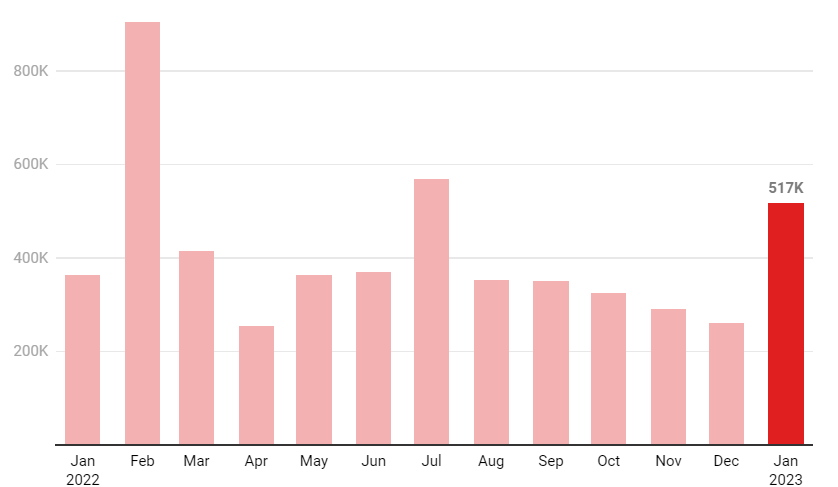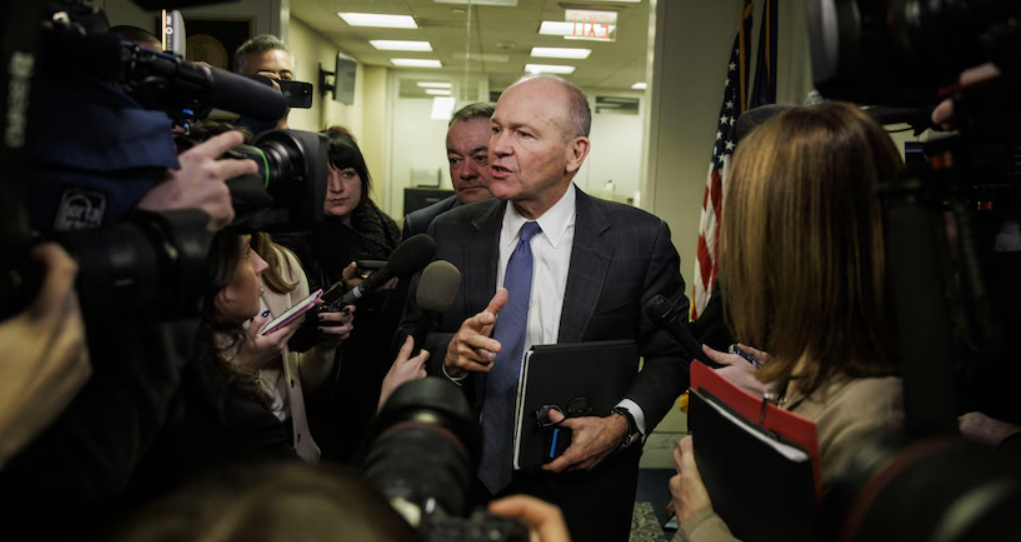The U.S. economy roared back to life in January, defying expectations with a surge in hiring that shattered even the most optimistic forecasts. Employers added a stunning 353,000 jobs last month, according to the latest data from the Bureau of Labor Statistics (BLS), far exceeding the consensus estimate of around 175,000. This marks the strongest monthly job gain since February 2020, before the pandemic wreaked havoc on the labor market.
Key Highlights on U.S. Job Market and Statics
- Job growth: The January increase was significantly higher than December’s revised gain of 223,000 and blows past the pre-pandemic record of 312,000 set in December 2019.
- Broad-based gains: The surge in hiring was widespread across various sectors, with professional and business services leading the pack with 92,000 new jobs. Healthcare added 57,000 jobs, retail trade gained 44,000, and social assistance saw an increase of 36,000 jobs.
- Unemployment rate: The unemployment rate held steady at 3.4%, matching the 50-year low reached in December. This indicates a tight labor market with more job openings than available workers.
- Wage growth: Average hourly earnings rose by 0.5% in January, translating to an annual increase of 4.4%. While significant, wage growth hasn’t kept pace with inflation, which currently sits at 6.4%.
Possible Implications:
- Economic outlook: This robust jobs report suggests a strong start to 2024 for the U.S. economy, potentially easing concerns about a recession. However, inflation remains a significant concern, and the Federal Reserve may continue raising interest rates to combat it.
- Policy decisions: The Fed might be more cautious about raising interest rates too quickly given the strong job market, but persistent inflation could still prompt them to act.
- Labor market: The tight labor market could benefit workers seeking better job opportunities and higher wages, but it also presents challenges for employers struggling to find qualified candidates.
Additional Points to Consider:
- The report only reflects data from January, and the coming months will be crucial to see if this momentum continues.
- The impact of the Omicron variant on the labor market in late January and early February is not yet fully reflected in the data.
- It’s important to remember that the economic recovery is not evenly distributed, and some groups are still facing challenges finding employment.
Overall, the January jobs report paints a positive picture of the U.S. labor market, but challenges remain, particularly regarding inflation and its impact on purchasing power. As the year unfolds, it will be interesting to see how these factors play out and how they affect the overall economic trajectory.



